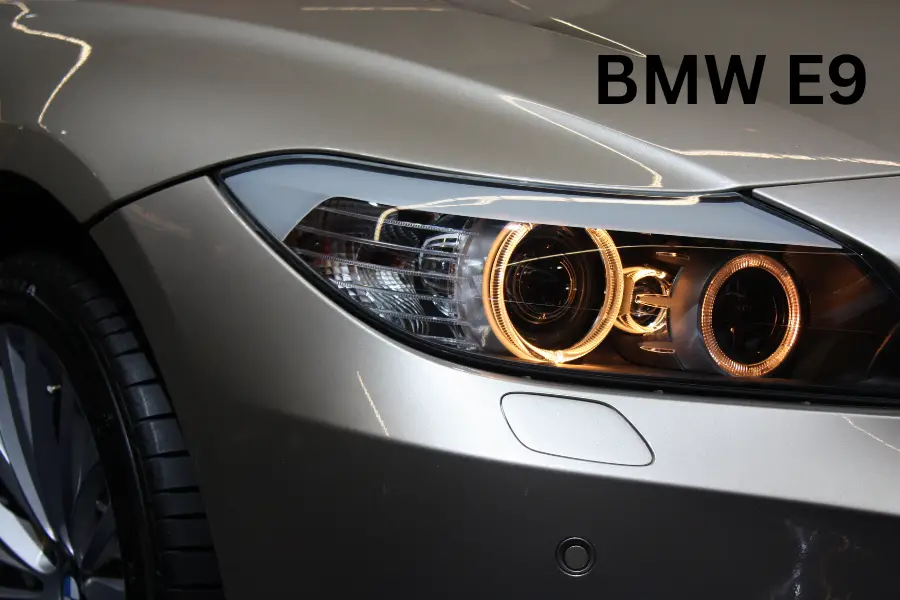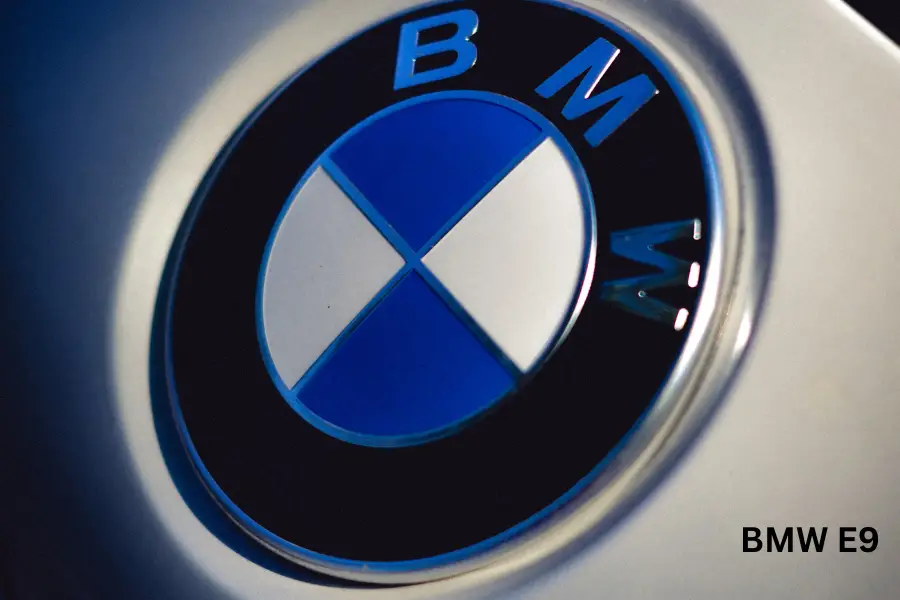Table of Contents
The BMW E9 is more than just a car—it’s an automotive design and performance icon. First introduced in 1968, the BMW E9 left an indelible mark on BMW’s history, contributing to the brand’s rise as a leader in luxury sports coupes. With its sleek design, powerful engine, and racing heritage, the E9 symbolised automotive excellence.
In this article, we’ll explore the history of the BMW E9, exploring its origins, design philosophy, performance achievements, and lasting legacy in the world of classic cars. We’ll also highlight the E9’s role in shaping BMW’s future models and its influence on car enthusiasts worldwide.
Origins and Development
The BMW E9 was developed during a time when BMW sought to establish itself as a serious contender in the luxury sports car market. Designed as a replacement for the BMW 2000 C and CS models, the E9 featured a larger engine, a more refined chassis, and a completely new body designed by Wilhelm Hofmeister.
The E9 was initially launched as the 2800 CS model, featuring a 2.8-liter inline-six engine. It quickly gained attention for its sleek, elegant design that stood out among competitors. The car’s longer wheelbase, increased power, and luxurious interior made it a favourite among driving enthusiasts and collectors.
The E9’s development set the stage for BMW’s future endeavours in luxury vehicles and motor sport.
Design Philosophy
The BMW E9’s design is often described as a perfect blend of elegance and sportiness. Its long hood, short rear deck, and clean lines were typical of the classic Grand Tourer (GT) style but with a modern twist that defined BMW’s design language for decades.
The Hofstadter kink, a signature BMW design feature where the window line bends near the rear pillar, added a unique aesthetic. The large glass windows, thin pillars, and flowing roof line provided the E9 with an airy, lightweight appearance.
The interior of the E9 was equally impressive. Premium materials like leather, wood trim, and chrome accents adorn the cabin, giving the car a luxurious feel. Despite being a high-performance vehicle, the E9 never compromised on comfort.
The BMW E9 in Motorsport
The BMW E9 truly etched its name in automotive history through its remarkable racing triumphs, particularly with the iconic BMW 3.0 CSL. Dubbed the ‘Bat mobile’ for its aggressive aerodynamic body kits, the 3.0 CSL was purposefully crafted for racing and dominated the European Touring Car Championship during the 1970s.
BMW developed the 3.0 CSL as a lightweight version of the E9, with its aluminium and thinner steel body. The CSL was fitted with a high-performance 3.0-litre inline-six engine, later expanded to 3.2 litres, which produced up to 500 horsepower in racing trim.
This car became a force to be reckoned with on the racetrack, achieving multiple wins in Le Mans and Se bring, among other prestigious events. The E9’s racing legacy was instrumental in solidifying BMW’s reputation for creating luxury vehicles and high-performance machines.
Engineering Excellence
Under the hood, the BMW E9 boasted a series of inline-six engines known for their smooth power delivery and reliability. A 3.0-litre version followed the 2.8-litre engine in the 2800 CS in the BMW 3.0 CS and 3.0 CS models.
The 3.0 CSi featured Bosch D-Jetronic fuel injection, which improved power output and fuel efficiency. With 200 horsepower on tap, the E9 could accelerate from 0 to 60 mph in under 7 seconds—impressive for its time.
The car’s performance wasn’t just about speed. Its handling characteristics, aided by a well-tuned suspension system and balanced weight distribution, made the E9 a joy to drive on the road and the track.
Evolution of the E9 Series
Throughout its production run, the BMW E9 saw several variants, each improving on the previous model’s performance and features. The BMW 2800 CS was followed by the 3.0 CS, 3.0 CSi, and the lightweight 3.0 CSL.
Each model in the E9 lineup showcased BMW’s commitment to performance, luxury, and innovation. The CSi variant, for instance, was equipped with electronic fuel injection, making it more efficient and powerful than its carbonated siblings.
Meanwhile, the 3.0 CSL, with its racing pedigree, offered a glimpse into the future of BMW’s motor sport division. These models collectively contributed to the E9’s lasting appeal among collectors and car enthusiasts.

The E9’s Influence on Future BMW Models
The BMW E9 laid the foundation for future BMW coupes and luxury sedans, influencing the design and engineering of cars like the BMW 6 Series and BMW 8 Series. The E9’s sleek, elongated profile was mirrored in these later models, while its racing spirit was carried forward in the M division, a testament to its enduring influence.
The BMW M1, BMW’s first mid-engine super car, and subsequent M3 and M5 models owe much of their design and performance DNA to the innovations introduced in the E9.
Restoration and Collect ability
The BMW E9 is a highly coveted classic car, with many enthusiasts and collectors undertaking restoration projects to preserve its legacy. Restoring an E9 to its original condition is a labour of love, from sourcing original BMW parts to ensuring the correct paint codes and interior materials.
Restoring an E9 to its former glory is a labour of love, from sourcing original BMW parts to ensuring the correct paint codes and interior materials. Today, well-restored E9 models can fetch upwards of $100,000 at auction, with unique models like the 3.0 CSL commanding even higher prices.
BMW E9 in Popular Culture
Over the years, the BMW E9 has appeared in several films, TV shows, and magazines, further cementing its status as an iconic vehicle. Its timeless design and racing heritage make it a favourite among classic car enthusiasts, and it continues to be featured in classic car show sand concurs d’elegance worldwide.
Modern-day Enthusiast Community
The BMW E9 community remains vibrant, with owners and fans around the globe sharing tips, restoration advice, and historical information. Several clubs and online forums are dedicated to the E9, ensuring its legacy remains alive and well in the digital age.
Why the BMW E9 is a Timeless Classic
The BMW E9 represents a perfect fusion of design, performance, and racing success. It’s a car that not only defined an era for BMW but also set new standards for the industry. Whether you’re a car enthusiast or appreciate fine engineering, the E9 is a testament to BMW’s ability to create timeless classics.
Conclusion
The BMW E9 remains one of the most iconic models in BMW’s storied history, thanks to its perfect combination of elegance, performance, and motor sport success. From its stylish design to its impressive engineering, the E9 solidified BMW’s reputation as a leader in the luxury sports coupe market and laid the foundation for the brand’s future innovations. Its influence is still visible in modern BMW models, and its racing pedigree inspires car enthusiasts worldwide. Whether as a prised collectable or a symbol of automotive excellence, the BMW E9 has earned its place in automotive history.
Are you fascinated by the legacy of classic cars like the E9? Explore our blog for deeper insights into the world of automotive legends!
Explore more on the BMW E9 here
FAQs
What is the BMW E9?
The BMW E9 is a luxury sports coupe produced by BMW from 1968 to 1975, known for its elegant design and racing success.
What engines did the BMW E9 have?
The E9 featured various inline-six engines, including the 2.8-liter and 3.0-liter, with later models like the CSi having electronic fuel injection.
Why is the BMW E9 famous?
The E9 is famous for its sleek design, luxurious features, and its racing success, particularly the 3.0 CSL, known as the Bat mobile.
How much is a BMW E9 worth today?
Restored BMW E9 models can sell for between $50,000 to over $100,000, with special models like the 3.0 CSL commanding even higher prices.
What influenced future BMW models?
The E9’s design and engineering laid the foundation for future BMW models, especially the 6 Series, 8 Series, and M division cars.

